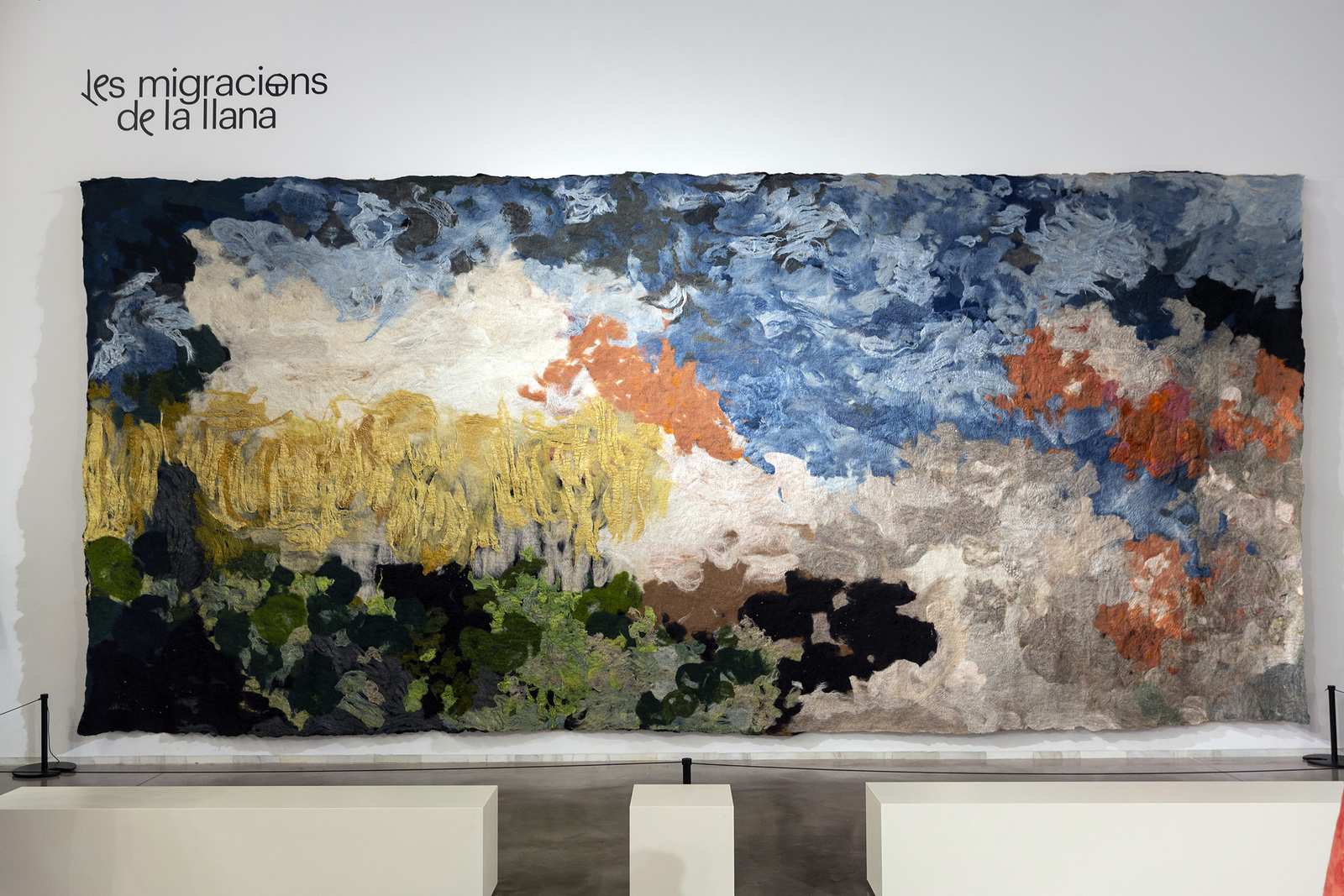Claudy Jongstra, long life to wool
Dutch artist and activist Claudy Jongstra stars in the exhibition Pastoral Futures. The Migrations of Wool at Disseny Hub Barcelona. Until 21 January.

The event highlights the movement that has arisen around wool as a raw material and the possibilities that are opening up thanks to new applications in fashion design or as an artistic language.
The exhibition is carried out in collaboration with two institutions: Materfad, a centre for materials in Barcelona, created and promoted by the FAD; and Eina Obra, a project of the EINA School that disseminates design and art. On display are outstanding works by this renowned artist whose work has been exhibited in international museums and in public, private and corporate collections.
Claudy Jongstra has created the large-format piece Tangible transformation, a tapestry made of wool that reproduces an imagined landscape in dimensions of 3.6 x 7.9 m. It is a proposal for interaction with visitors. It is a proposal for interaction with visitors to the exhibition and is made up of native colours that the artist creates from dye plants that she herself grows on a biodynamic farm. In this way, she wants to contribute to enriching the soil and feeding the bees, thus helping to increase the biodiversity of the region. As Disseny Hub Barcelona points out, “The work is an urgent call for awareness to protect and conserve our ecosystem”. It is inspired by Verdures, the tapestries with dense foliage that triumphed in Flanders during the 15th and 16th centuries.

In addition to various projects by the artist, her collaborative work with the project Tornen les esquelles of the University Centre of Design and Art of Barcelona (EINA), which is concerned with recovering wool from the herds that graze in the Serra de Collserolla Natural Park, is also on display.
Tornen les esquelles (The cowbells are back) is a project by Martina Manyà and Anna Vivero, awarded in the first call of Collserola LAB. Every year tons of wool are buried or burned because there is no coordination for its processing. This work focuses on how this material can shape alternative futures in the park with its environmental, artistic, material and ethical implications.

In 2001, the creator established her studio in the rural north of the Netherlands, where she began an ambitious ecological experiment in the local landscape. She maintains a flock of rare native Drenthe Heath sheep (the oldest breed in Northern Europe) and cultivates a botanical garden of dye plants to create a fully sustainable whole that culminates in her artworks. His creative practice evolves as his impact on the region evolves, collaborating with local farms, schools and social programmes based on a deep respect for narratives that relate to people, land and knowledge.

Her works are in the contemporary art collection of the European Parliament and in museum collections such as MoMA and the Cooper Hewitt Smithsonian Design Museum in New York, the Museum of Contemporary Art in Los Angeles and the Mingei International Museum in San Diego, in California, the Victoria & Albert Museum in London and, in his home country, the Stedelijk Museum in Amsterdam, the Gemeentemuseum in The Hague, the De Lakenhal Museum in Leiden, the Limburgs Museum in Venlo and the Textile Museum in Tillburg, among others. Her fashion collaborations include such renowned names as Christian Lacroix, Donna Karan, Hermès, John Galliano, Maison Margiela and Viktor&Rolf.

As for his involvement with architectural firms, he has worked for: Deborah Berke Partners, MVRDV, OMA / Rem Koolhaas or Snøetta, just to name a few of the most internationally renowned studios. Meanwhile, Marina Abramovic, Hella Jongerius and Berlinde de Bruyckere are three artists she has had the good fortune to work with.
On the occasion of the exhibition, a colloquium will be held on Thursday 11 January, bringing together the artist Claudy Jongstra and one of the leaders of the Tornen les esquelles project, Anna Vivero, together with six experts from different fields: Angel Amurrio (Entheos), Fernando García Dory (Inland), Gemma Salvador (Llanatura) and Vicente Guallart (IAAC – Valldaura Labs). The event will focus on “environmental, cultural and economic unsustainability related to the disappearance of pastoralism, as well as the potential of wool to shape alternative futures in the context of pastoralism”, they say.
Editor: Beatriz Fabián
Beatriz is a journalist specialising in offline and online editorial content on design, architecture, interior design, art, gastronomy and lifestyle.